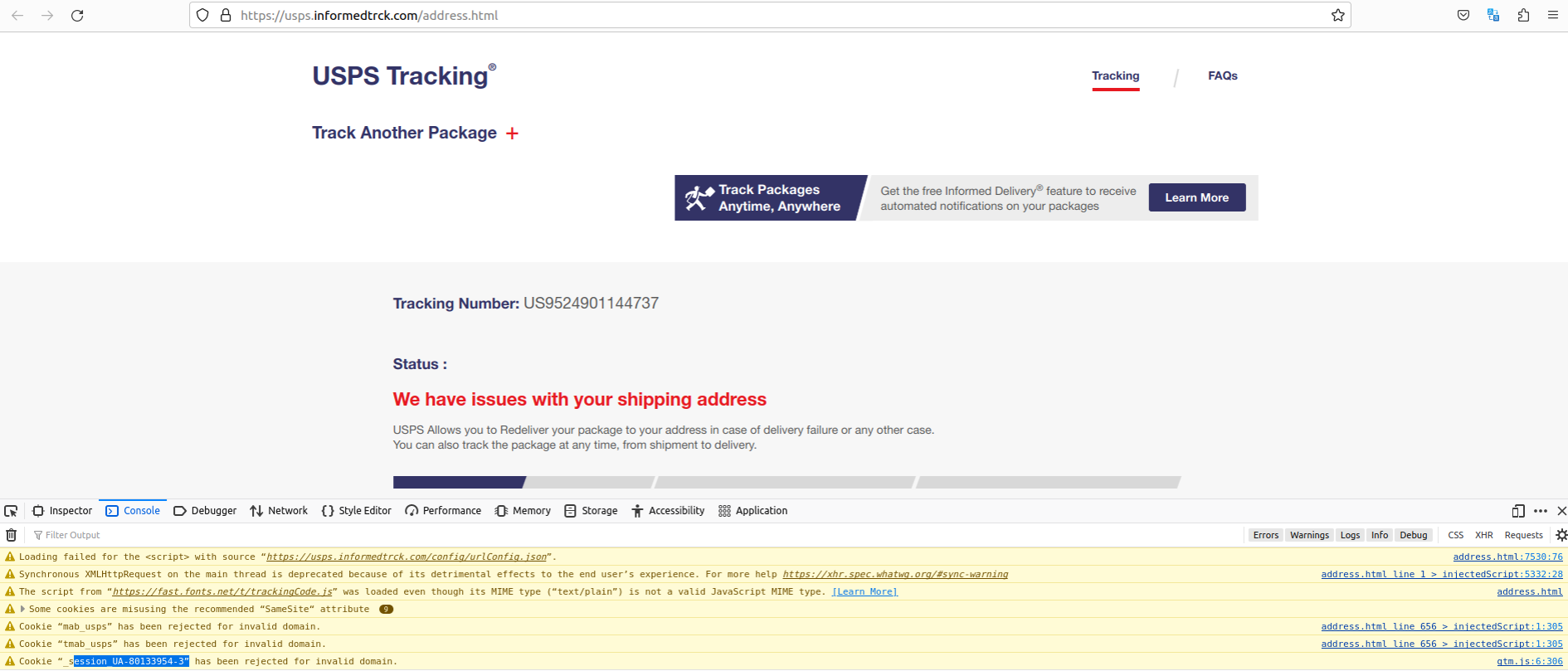Microsoft today released updates to fix more than five dozen security holes in its Windows operating systems and related software, including three “zero day” vulnerabilities that Microsoft warns are already being exploited in active attacks.

The zero-day threats targeting Microsoft this month include CVE-2023-36025, a weakness that allows malicious content to bypass the Windows SmartScreen Security feature. SmartScreen is a built-in Windows component that tries to detect and block malicious websites and files. Microsoft’s security advisory for this flaw says attackers could exploit it by getting a Windows user to click on a booby-trapped link to a shortcut file.
Kevin Breen, senior director of threat research at Immersive Labs, said emails with .url attachments or logs with processes spawning from .url files “should be a high priority for threat hunters given the active exploitation of this vulnerability in the wild.”
The second zero day this month is CVE-2023-36033, which is a vulnerability in the “DWM Core Library” in Microsoft Windows that was exploited in the wild as a zero day and publicly disclosed prior to patches being available. It affects Microsoft Windows 10 and later, as well as Microsoft Windows Server 2019 and subsequent versions.
“This vulnerability can be exploited locally, with low complexity and without needing high-level privileges or user interaction,” said Mike Walters, president and co-founder of the security firm Action1. “Attackers exploiting this flaw could gain SYSTEM privileges, making it an efficient method for escalating privileges, especially after initial access through methods like phishing.”
The final zero day in this month’s Patch Tuesday is a problem in the “Windows Cloud Files Mini Filter Driver” tracked as CVE-2023-36036 that affects Windows 10 and later, as well as Windows Server 2008 at later. Microsoft says it is relatively straightforward for attackers to exploit CVE-2023-36036 as a way to elevate their privileges on a compromised PC.
Beyond the zero day flaws, Breen said organizations running Microsoft Exchange Server should prioritize several new Exchange patches, including CVE-2023-36439, which is a bug that would allow attackers to install malicious software on an Exchange server. This weakness technically requires the attacker to be authenticated to the target’s local network, but Breen notes that a pair of phished Exchange credentials will provide that access nicely.
“This is typically achieved through social engineering attacks with spear phishing to gain initial access to a host before searching for other vulnerable internal targets – just because your Exchange Server doesn’t have internet-facing authentication doesn’t mean it’s protected,” Breen said.
Breen said this vulnerability goes hand in hand with three other Exchange bugs that Microsoft designated as “exploitation more likely:” CVE-2023-36050, CVE-2023-36039 and CVE-2023-36035.
Finally, the SANS Internet Storm Center points to two additional bugs patched by Microsoft this month that aren’t yet showing signs of active exploitation but that were made public prior to today and thus deserve prioritization. Those include: CVE-2023-36038, a denial of service vulnerability in ASP.NET Core, with a CVSS score of 8.2; and CVE-2023-36413: A Microsoft Office security feature bypass. Exploiting this vulnerability will bypass the protected mode when opening a file received via the web.
Windows users, please consider backing up your data and/or imaging your system before applying any updates. And feel free to sound off in the comments if you experience any difficulties as a result of these patches.
Microsoft today issued security updates for more than 100 newly-discovered vulnerabilities in its Windows operating system and related software, including four flaws that are already being exploited. In addition, Apple recently released emergency updates to quash a pair of zero-day bugs in iOS.

Apple last week shipped emergency updates in iOS 17.0.3 and iPadOS 17.0.3 in response to active attacks. The patch fixes CVE-2023-42724, which attackers have been using in targeted attacks to elevate their access on a local device.
Apple said it also patched CVE-2023-5217, which is not listed as a zero-day bug. However, as Bleeping Computer pointed out, this flaw is caused by a weakness in the open-source “libvpx” video codec library, which was previously patched as a zero-day flaw by Google in the Chrome browser and by Microsoft in Edge, Teams, and Skype products. For anyone keeping count, this is the 17th zero-day flaw that Apple has patched so far this year.
Fortunately, the zero-days affecting Microsoft customers this month are somewhat less severe than usual, with the exception of CVE-2023-44487. This weakness is not specific to Windows but instead exists within the HTTP/2 protocol used by the World Wide Web: Attackers have figured out how to use a feature of HTTP/2 to massively increase the size of distributed denial-of-service (DDoS) attacks, and these monster attacks reportedly have been going on for several weeks now.
Amazon, Cloudflare and Google all released advisories today about how they’re addressing CVE-2023-44487 in their cloud environments. Google’s Damian Menscher wrote on Twitter/X that the exploit — dubbed a “rapid reset attack” — works by sending a request and then immediately cancelling it (a feature of HTTP/2). “This lets attackers skip waiting for responses, resulting in a more efficient attack,” Menscher explained.
Natalie Silva, lead security engineer at Immersive Labs, said this flaw’s impact to enterprise customers could be significant, and lead to prolonged downtime.
“It is crucial for organizations to apply the latest patches and updates from their web server vendors to mitigate this vulnerability and protect against such attacks,” Silva said. In this month’s Patch Tuesday release by Microsoft, they have released both an update to this vulnerability, as well as a temporary workaround should you not be able to patch immediately.”
Microsoft also patched zero-day bugs in Skype for Business (CVE-2023-41763) and Wordpad (CVE-2023-36563). The latter vulnerability could expose NTLM hashes, which are used for authentication in Windows environments.
“It may or may not be a coincidence that Microsoft announced last month that WordPad is no longer being updated, and will be removed in a future version of Windows, although no specific timeline has yet been given,” said Adam Barnett, lead software engineer at Rapid7. “Unsurprisingly, Microsoft recommends Word as a replacement for WordPad.”
Other notable bugs addressed by Microsoft include CVE-2023-35349, a remote code execution weakness in the Message Queuing (MSMQ) service, a technology that allows applications across multiple servers or hosts to communicate with each other. This vulnerability has earned a CVSS severity score of 9.8 (10 is the worst possible). Happily, the MSMQ service is not enabled by default in Windows, although Immersive Labs notes that Microsoft Exchange Server can enable this service during installation.
Speaking of Exchange, Microsoft also patched CVE-2023-36778, a vulnerability in all current versions of Exchange Server that could allow attackers to run code of their choosing. Rapid7’s Barnett said successful exploitation requires that the attacker be on the same network as the Exchange Server host, and use valid credentials for an Exchange user in a PowerShell session.
For a more detailed breakdown on the updates released today, see the SANS Internet Storm Center roundup. If today’s updates cause any stability or usability issues in Windows, AskWoody.com will likely have the lowdown on that.
Please consider backing up your data and/or imaging your system before applying any updates. And feel free to sound off in the comments if you experience any difficulties as a result of these patches.

The fake USPS phishing page.
Recent weeks have seen a sizable uptick in the number of phishing scams targeting U.S. Postal Service (USPS) customers. Here’s a look at an extensive SMS phishing operation that tries to steal personal and financial data by spoofing the USPS, as well as postal services in at least a dozen other countries.
KrebsOnSecurity recently heard from a reader who received an SMS purporting to have been sent by the USPS, saying there was a problem with a package destined for the reader’s address. Clicking the link in the text message brings one to the domain usps.informedtrck[.]com.
The landing page generated by the phishing link includes the USPS logo, and says “Your package is on hold for an invalid recipient address. Fill in the correct address info by the link.” Below that message is a “Click update” button that takes the visitor to a page that asks for more information.
The remaining buttons on the phishing page all link to the real USPS.com website. After collecting your address information, the fake USPS site goes on to request additional personal and financial data.
This phishing domain was recently registered and its WHOIS ownership records are basically nonexistent. However, we can find some compelling clues about the extent of this operation by loading the phishing page in Developer Tools, a set of debugging features built into Firefox, Chrome and Safari that allow one to closely inspect a webpage’s code and operations.
Check out the bottom portion of the screenshot below, and you’ll notice that this phishing site fails to load some external resources, including an image from a link called fly.linkcdn[.]to.
A search on this domain at the always-useful URLscan.io shows that fly.linkcdn[.]to is tied to a slew of USPS-themed phishing domains. Here are just a few of those domains (links defanged to prevent accidental clicking):
usps.receivepost[.]com
usps.informedtrck[.]com
usps.trckspost[.]com
postreceive[.]com
usps.trckpackages[.]com
usps.infortrck[.]com
usps.quicktpos[.]com
usps.postreceive].]com
usps.revepost[.]com
trackingusps.infortrck[.]com
usps.receivepost[.]com
usps.trckmybusi[.]com
postreceive[.]com
tackingpos[.]com
usps.trckstamp[.]com
usa-usps[.]shop
usps.infortrck[.]com
unlistedstampreceive[.]com
usps.stampreceive[.]com
usps.stamppos[.]com
usps.stampspos[.]com
usps.trckmypost[.]com
usps.trckintern[.]com
usps.tackingpos[.]com
usps.posinformed[.]com
As we can see in the screenshot below, the developer tools console for informedtrck[.]com complains that the site is unable to load a Google Analytics code — UA-80133954-3 — which apparently was rejected for pointing to an invalid domain.

Notice the highlighted Google Analytics code exposed by a faulty Javascript element on the phishing website. Click to enlarge. That code actually belongs to the USPS.
The valid domain for that Google Analytics code is the official usps.com website. According to dnslytics.com, that same analytics code has shown up on at least six other nearly identical USPS phishing pages dating back nearly as many years, including onlineuspsexpress[.]com, which DomainTools.com says was registered way back in September 2018 to an individual in Nigeria.
A different domain with that same Google Analytics code that was registered in 2021 is peraltansepeda[.]com, which archive.org shows was running a similar set of phishing pages targeting USPS users. DomainTools.com indicates this website name was registered by phishers based in Indonesia.
DomainTools says the above-mentioned USPS phishing domain stamppos[.]com was registered in 2022 via Singapore-based Alibaba.com, but the registrant city and state listed for that domain says “Georgia, AL,” which is not a real location.
Alas, running a search for domains registered through Alibaba to anyone claiming to reside in Georgia, AL reveals nearly 300 recent postal phishing domains ending in “.top.” These domains are either administrative domains obscured by a password-protected login page, or are .top domains phishing customers of the USPS as well as postal services serving other countries.
Those other nations include the Australia Post, An Post (Ireland), Correos.es (Spain), the Costa Rican post, the Chilean Post, the Mexican Postal Service, Poste Italiane (Italy), PostNL (Netherlands), PostNord (Denmark, Norway and Sweden), and Posti (Finland). A complete list of these domains is available here (PDF).

A phishing page targeting An Post, the state-owned provider of postal services in Ireland.
The Georgia, AL domains at Alibaba also encompass several that spoof sites claiming to collect outstanding road toll fees and fines on behalf of the governments of Australia, New Zealand and Singapore.
An anonymous reader wrote in to say they submitted fake information to the above-mentioned phishing site usps.receivepost[.]com via the malware sandbox any.run. A video recording of that analysis shows that the site sends any submitted data via an automated bot on the Telegram instant messaging service.
The traffic analysis just below the any.run video shows that any data collected by the phishing site is being sent to the Telegram user @chenlun, who offers to sell customized source code for phishing pages. From a review of @chenlun’s other Telegram channels, it appears this account is being massively spammed at the moment — possibly thanks to public attention brought by this story.
Meanwhile, researchers at DomainTools recently published a report on an apparently unrelated but equally sprawling SMS-based phishing campaign targeting USPS customers that appears to be the work of cybercriminals based in Iran.
Phishers tend to cast a wide net and often spoof entities that are broadly used by the local population, and few brands are going to have more household reach than domestic mail services. In June, the United Parcel Service (UPS) disclosed that fraudsters were abusing an online shipment tracking tool in Canada to send highly targeted SMS phishing messages that spoofed the UPS and other brands.
With the holiday shopping season nearly upon us, now is a great time to remind family and friends about the best advice to sidestep phishing scams: Avoid clicking on links or attachments that arrive unbidden in emails, text messages and other mediums. Most phishing scams invoke a temporal element that warns of negative consequences should you fail to respond or act quickly.
If you’re unsure whether the message is legitimate, take a deep breath and visit the site or service in question manually — ideally, using a browser bookmark so as to avoid potential typosquatting sites.
Update: Added information about the Telegram bot and any.run analysis.